
Joint virtual monthly exhibition. November – “The Religion”

Preili Museum of History and Applied Arts (Latvia), Grodno State Museum of the History of Religion (Belarus) and Panevezys Local Lore Museum (Lithuania), joint virtual monthly exhibition “The Religion”.
Preili Museum of History and Applied Arts
Preili Roman Catholic Church. The Roman Catholic Church in Preili have ancient roots. Construction of the existing stone church began on the site of the previous wooden church in the 1870s. The Preili manor owner of that time - Jan Mohl - took care of the construction of the church. It was built of boulders and bricks, but the construction of the church tower was rushed and it was built lower than planned. In 1886, the construction of the church was completed and it was consecrated by the Dean of Preili Danushevsky. In 1896, the church was consecrated by Archbishop of Mogilev Franciszek Albin Symon in honor of the Assumption of the Virgin Mary.
1. An ornatus or chasuble. The beginning of the 18th century. The ornatus was used during Catholic rites in the Preili Catholic church. At the beginning of the 18th century Jadviga Elizabeth, the new wife of the Preili owner Fabian Borch, before childbirth made a testament and left her wedding dress to the Preili church to make an ornatus. The ornatus represent the tight connection between Preili manor owners and the Catholic church. Displayed in the exhibition of the Preili Museum of History and Applied Arts.
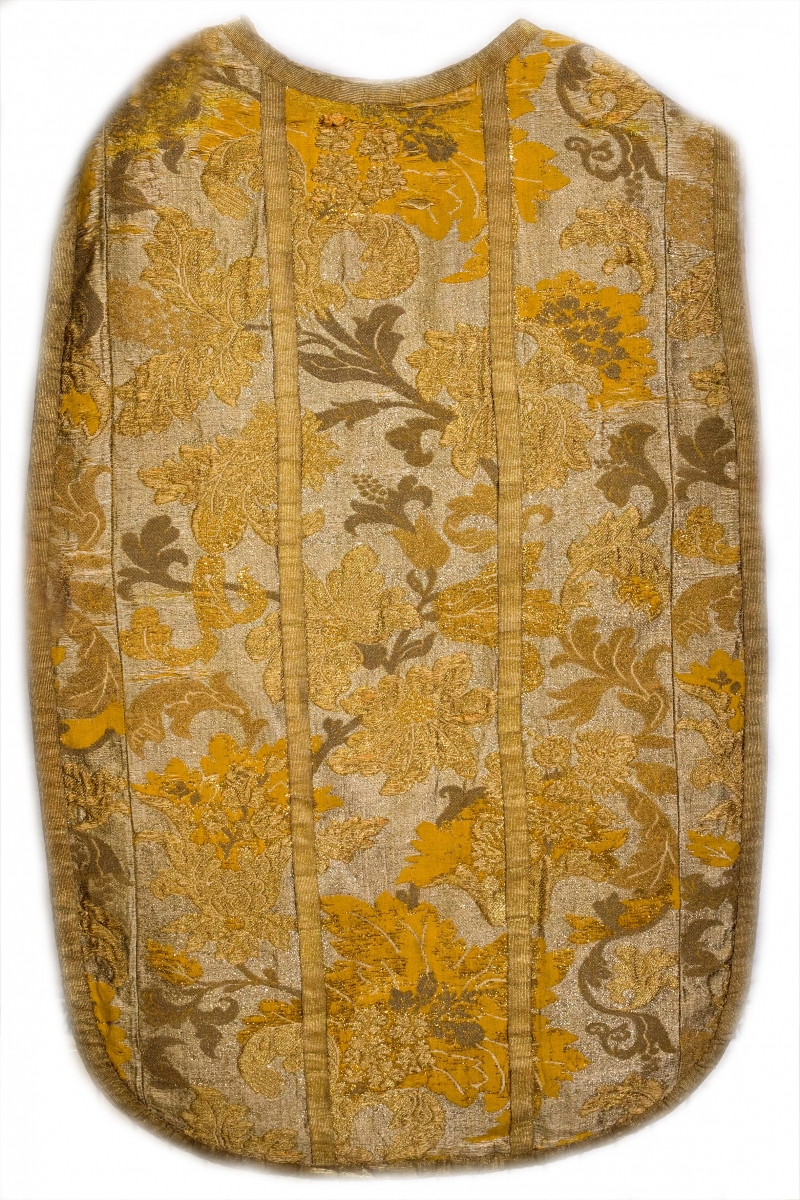
2. Sketch of the altar of the Preili Roman Catholic Church. Year 1880. The author of the central altar, as well as the entire church building, was the architect of the civil construction of the Russian Empire Nikolai Visocki (1831-1907). N. Visocki has designed many railway infrastructure objects and public buildings in the cities of Vitebsk province – Nevel, Vitebsk and Daugavpils. Later, each dean of the Preili church during his service in the Preili has made more or less improvements – by rebuilding or improving this or another part of the church.
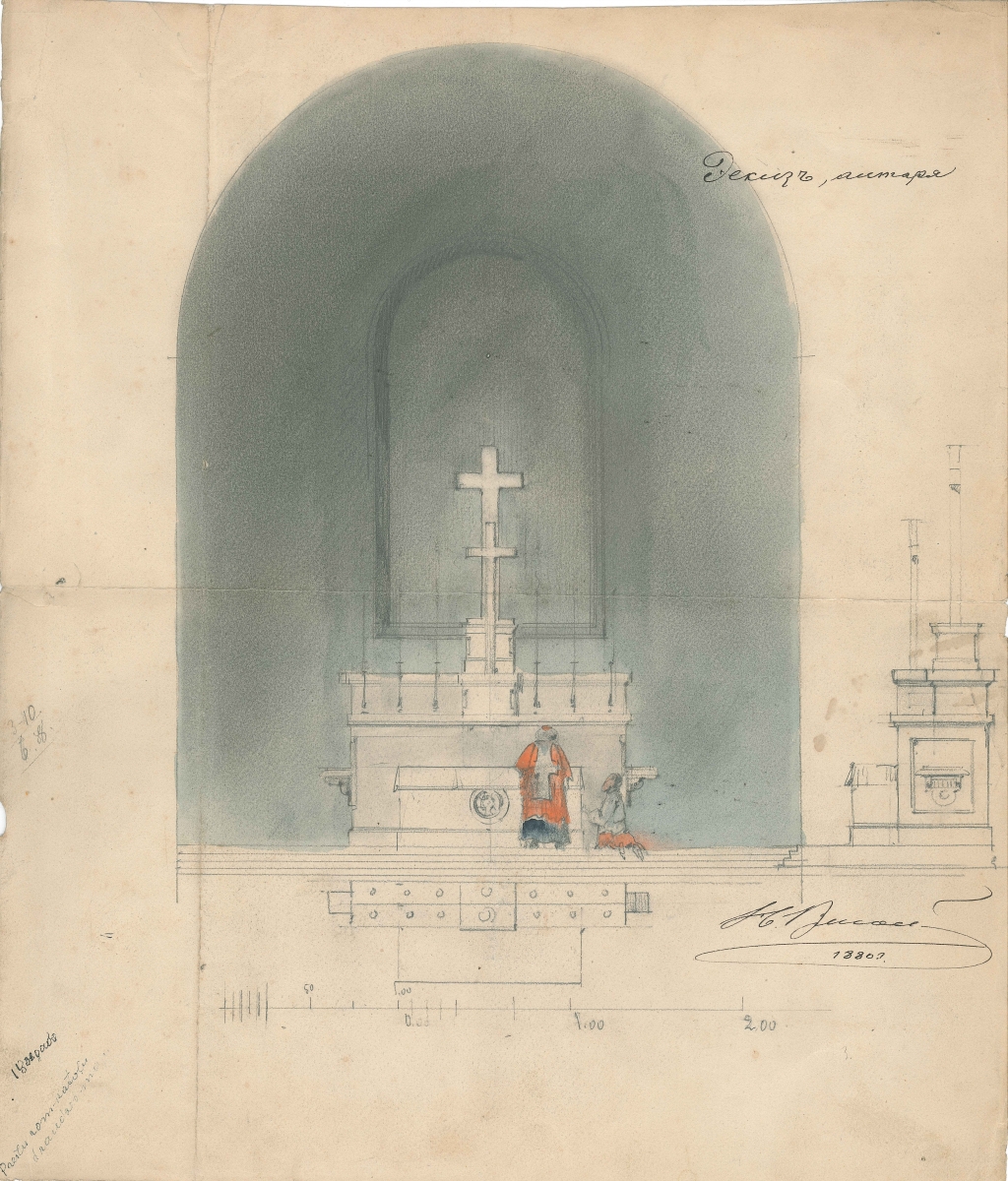
3. Dean Pēteris Apšenieks at the main altar. Around 1934. Photographer: Joselis Nadel. Nadel's photography depicts the central altar between 1930 and 1934, when the first significant alterations to the altar part had already taken place. Pēteris Apšenieks (1887-1942) served in Preiļi from 1930 to 1936, and he was not only a dean, but also a writer and cultural worker. He has written spiritual literature, schoolbooks, secular literature, dramas and worked in journalism. Following Soviet occupation, he was arrested on June 11, 1941 and sent without a trial to the Camp in Severouralsk in Sverdlovsk District, where he died in 1942.

Grodno State Museum of the History of Religion
Historically, Grodno is the center of a multi-confessional region. Christianity in the form of the byzantine rite began to spread here, in pagan lands, no later than in the 12th century. This process laid the foundation for the development of icon painting, arts and crafts, and contributed to the development of education and the formation of book culture. One of the first Christian churches, the Church of Saints Boris and Gleb, was built in Grodno in the 12th century and has been partially preserved to this day. Western rite Christianity, Catholicism, increased its influence during the period of the Grand Duchy of Lithuania. In the middle ages, communities of Jews and Muslims appeared in Grodno and in the near vicinity of it. In the 16th century, the ideas of the Reformation began to spread and the nobility accepted Protestantism, however, the positions of the Catholic Church strengthened during the Counter-Reformation and most of the magnates returned to Catholicism. The Uniate Church was founded in 1596, and the Orthodox Church lost a significant part of the faithful, but retained its organizational structure and cultural tradition. After the entry of the Belarusian lands into the Russian Empire, Orthodoxy strengthened its position and became the dominant confession. After the First World War, our lands became part of the Polish Republic. The new authorities began to support the Catholic Church actively, although the majority of the population was Jewish. In March 1943, after the liquidation of the Grodno ghetto, the Jewish religious tradition was abandoned for a long time, and only from the 1990s it gradually began to revive. In the postwar period, the Soviet authorities continued their policy of oppression of religious life. Churches and monasteries were closed and destroyed, church structures were reduced. In 1960, the Nativity of the Theotokos Monastery in Grodno was abolished. On November 29, 1961 one of the oldest Catholic churches in Belarus, Vitovt’s Church in Grodno, was blown up.
Since the late 1980s, a religious revival began. Today Grodno is considered a city of different religions. There are Orthodox and Catholic churches, one of the largest synagogues in Eastern Europe and the only Protestant church in Belarus functioning in a historic building. More information about the religious life of the city can be found in the Grodno State Museum of the History of Religion that is also the only one in the country.
1. The Icon "St. Euphrosyne of Polotsk", 1859. Saint Euphrosyne of Polotsk, descended from the Polotsk branch of the Rurikovich family, was a representative of the Enlightenment who lived in the 12th century. Today she is considered the patroness of the Belarusian people. Her name is associated with the creation of a famous monument of arts and crafts - the cross of Euphrosyne of Polotsk. Although Saint Euphrosyne was canonized in the Middle Ages, her cult acquired special veneration at the beginning of the 20th century. Until this time, single images of the saint are known. One of them is in the collection of the Grodno State Museum of the History of Religion. The author's signature located in the center of the right edge attaches particular value to the icon, which was created by the nun Nafonta Kalashnikova in 1859.
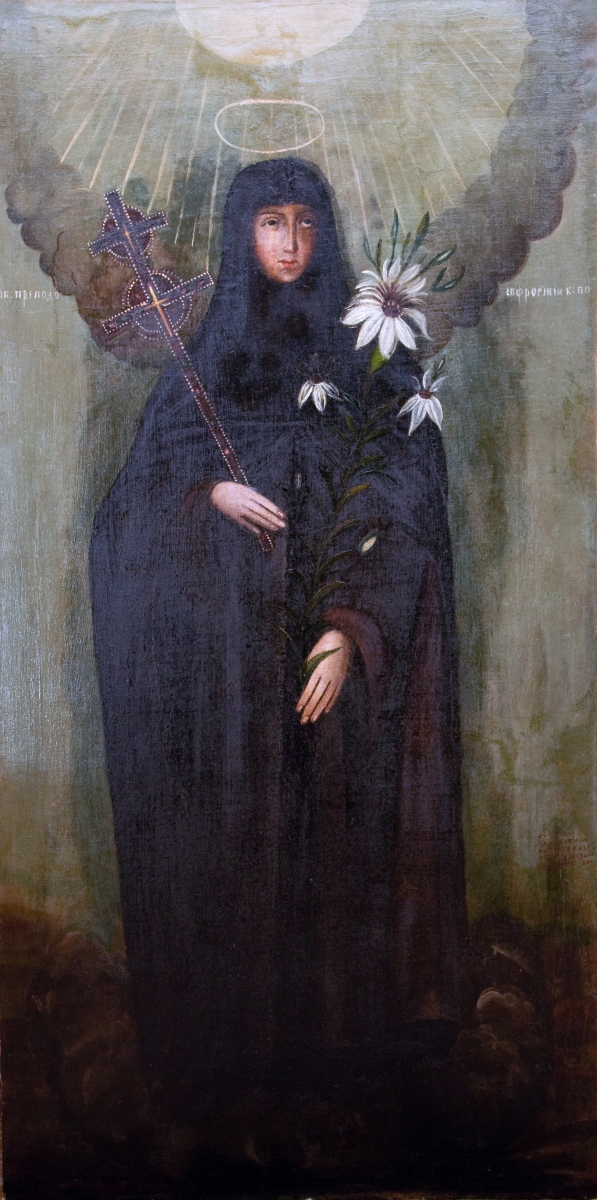
2. The Reiment, 18th century. The reiment (casula) is the upper liturgical vestment of the Roman Catholic clergy. It can only be worn by bishops and priests. It consists of two panels, rounded at the bottom and fastened with shoulder seams. Since the reiment is worn on top of other liturgical clothes and is the most beautiful part of it, it is poetically compared to love, the combination of all virtues. The reiment shown in the photo is of our main interest because there is a fragment of the Slutsk belt in the central part of its back panel. These richly decorated belts were a symbol of the dignity of the gentry class; gold and silver threads were often used in their production.
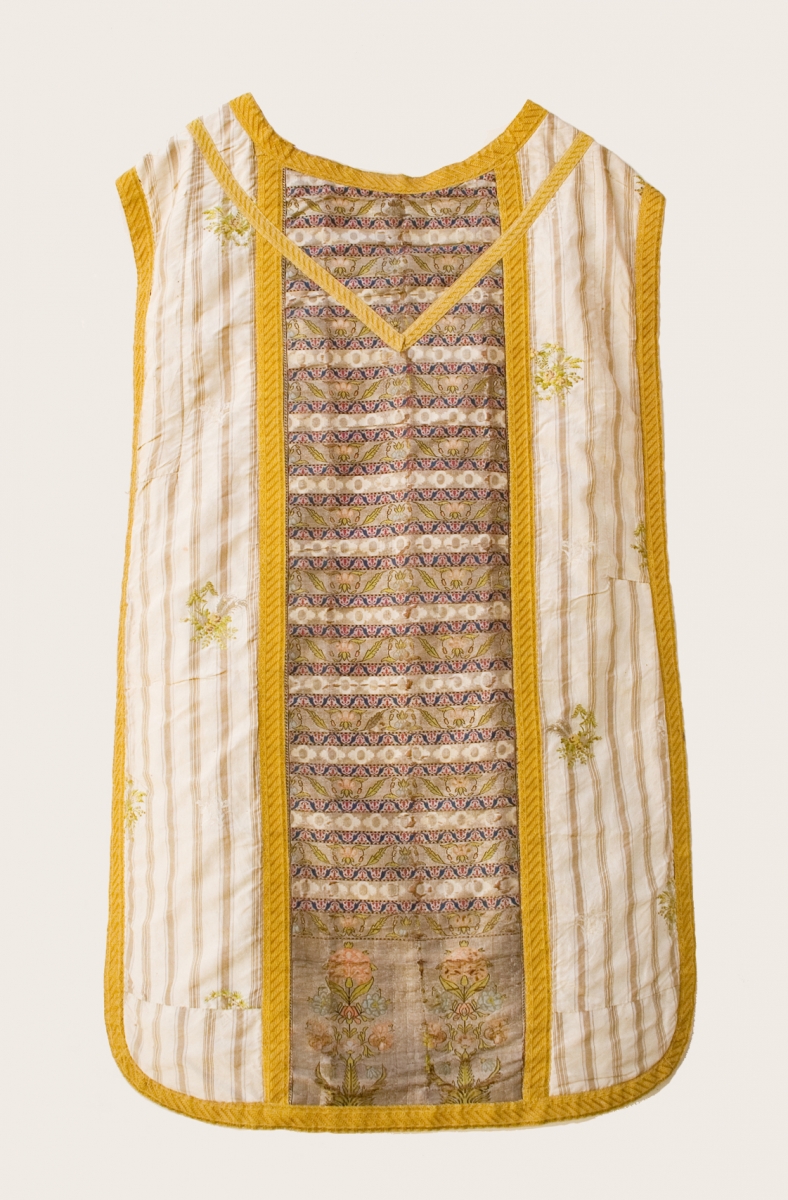
3. "Mishnayot, i.e. Deuteronomy", 1852. The Grodno Jewish community was one of the largest and most influential in the territory of the Grand Duchy of Lithuania. It is not surprising that the first Jewish printing house in Belarus was opened in Grodno. It was run by the master Nokhim. Subsequently, his business was continued by his son Zymel Nokhimovich, who also owned a printing house in Vilna since 1821. The printing house also published religious literature, for example, the presented edition of the text of the fifth part of Myshnayot ("Deuteronomy"), which was published in 1852.
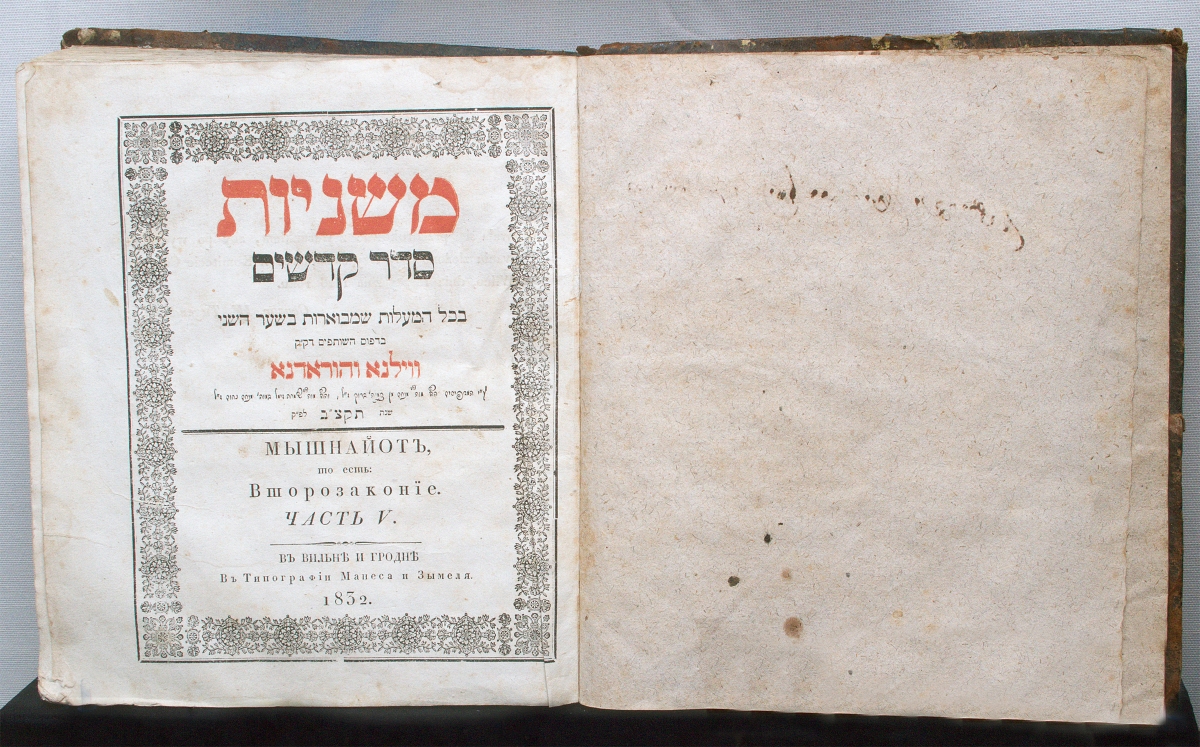
Panevėžys Local Lore Museum
Cathedral of Christ the King in Panevėžys. The construction of the new parish Church named after the Bishop St. Stanislaus the Martyr started in 1908 in the south-western part of Panevėžys. However, the shrine was not finished due to the wars and unfavorable circumstances. On the 4th of April, 1926 Pope Pius XI established the Diocese of Panevėžys and designated the above mentioned Church under construction to the future Bishop. The Pope gave the title to the future Church – Cathedral of Christ the King. The architect Romanas Steikūnas and the engineer Aleksandras Gordevičius changed the plan of the Church under construction.
1. Cathedral of Christ the King in Panevėžys. Around 1935. Photo by Antanas Patamsis. The Bishop Kazimieras Paltarokas, the Canon Jonas Maciejauskas and the Prelate Pranciškus Strakšas took care of the construction matters of the Cathedral. On the 4th of March, 1930 the Prelate Jonas Mačiulis-Maironis consecrated the Cathedral. On the 30th of June, 1933 during the Eucharistic Congress of the Diocese, His Eminence the Metropolitan Archbishop of Kaunas Juozapas Skvireckas consecrated the Cathedral.

2. The first Bishop of Panevėžys Kazimieras Paltarokas (1875–1958). Panevėžys, around 1935. Photo by Jonas Žitkus. The Bishop dedicated this photo to the Dean of Rokiškis Deanery Jurgis Žitkevičius, and the photography is stored in the funds of Panevėžys Local Lore Museum. K. Paltarokas was consecrated as Bishop on the 2nd of May, 1926 in Basilica of Kaunas. The ingress took place in Panevėžys on the 30th of May, 1926. The Bishop wrote over fifty pastoral letters, published publications on pastoral, education and other actual issues. The Bishop is buried in the crypt of Panevėžys Cathedral.
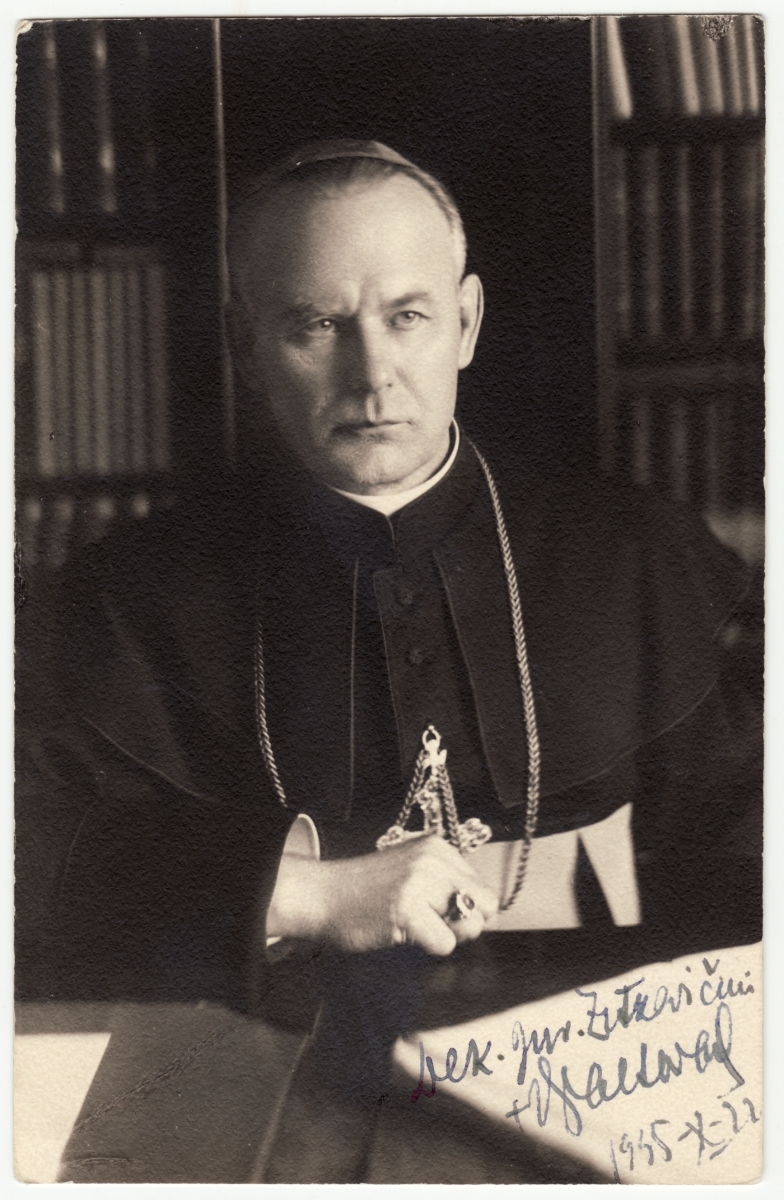
3. The central nave of the Cathedral of Christ the King in Panevėžys. 2004. Photo by Gintaras Lukoševičius. The large altar was the gift from Bishop K. Paltarokas to the Cathedral. The statue of Christ the King stands above the tabernacle. Lithuanian sculptor Juozas Zikaras (1881–1944), who lived in Panevėžys, created this statue. The fresco of multi-figure composition “St. Casimir's appearance to the Lithuanian army at Polotsk” is painted on the ceiling of the apse by the painter Jonas Mackevičius (1872–1954). Other famous local artists also decorated the Cathedral; there one can experience the beauty of the frescoes and paintings by painters Povilas Puzinas, Steponas Römeris and the sculptures by Vincentas Jakševičius.

About the project ENI-LLB-1-244 “Promotion of historical and culture cross border through museums innovations”
The project aims to build a cross border cooperation platform creating preconditions for ensuring the increasing interest of tourists and visitors about the cultural and historical heritage in the border area of Latvia, Lithuania and Belarus.
This project is funded by the European Union
Project budget: 367 864.64 EUR, EU funding 331 078.17 EUR
Project implementation period: 1st of June 2020 – 31st of May 2022
European Neighbourhood Instrument Cross-border Cooperation Programme Latvia-LithuaniaBelarus 2014-2020
https://eeas.europa.eu/delegations/belarus_be
Information prepared by:
Preili Museum of History and Applied Arts: https://preili.lv/nozares/kultura/muzeji/preilu-vestures-un-lietiskas-makslas-muzejs/
Grodno State Museum of the History of Religion: http://muzej.by/
Panevėžys Local Lore Museum: http://www.paneveziomuziejus.lt/
